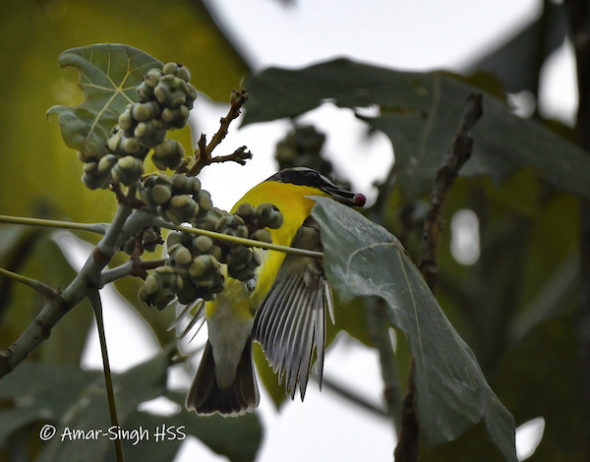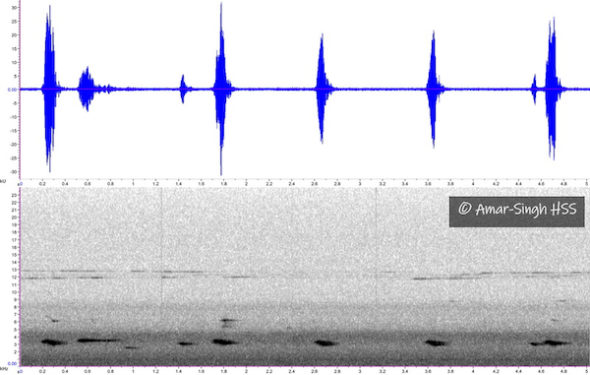A new species to add to the birds seen feeding on the fruit of the Macaranga bancana. Saw a male and female Yellow-rumped Flycatcher Ficedula zanthopygia at the tree feeding actively. There was competitive feeding with other Flycatchers and other birds especially the Green-backed Flycatchers Ficedula elisae. Fruit is taken by aerial sallies or hover-snatching, returning to a new perch each time; hence hard to document. One image (below) showing the feeding attached (a dark image, rescued using Viveza 2 software from the Nik collection).

Interestingly the male Yellow-rumped Flycatcher was intermittently vocal – something I have not observed in the past (unlike Green-backed Flycatchers which often vocalise at migration sites). The calls were single notes uttered 1.5-2 seconds part. There appeared be another Yellow-rumped Flycatcher responding at times, perhaps the female.

Sonogram and waveform image attached (see above).
Call recording here: https://xeno-canto.org/712171
Dato’ Dr Amar-Singh HSS – Ipoh, Perak, Malaysia
31st March 2022








